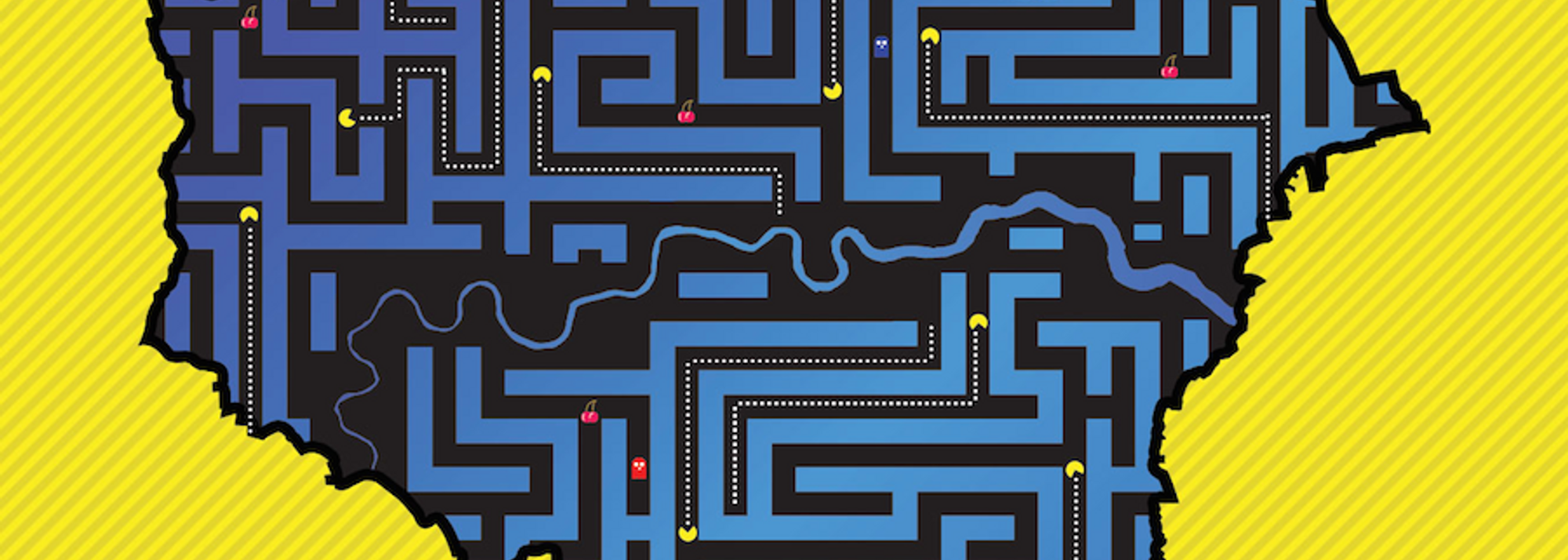PACMAN
On Sunday, 40,000 foolhardy runners will take to the streets of the British capital for the 35th edition of the London Marathon. Last month, SPIKES competed in another London road race that couldn’t have been more different.
The London Marathon starts in the leafy surroundings of Greenwich Park and ends on the Mall, perhaps the most regal road in the whole world. Rather less distinguished (but no less characterful) were the sites taken in by runners at last month’s Adidas Energy Takeover, of which I was one.
It began in a garage in Elephant and Castle (an area not nearly as glamorous as its name might suggest), and weaved into the streets of Lambeth before finishing in a petrol station in Vauxhall (which had been converted into a bar, and so was about as glamorous as a petrol station gets).
It was not a mass-participation race with closed roads and a route made clear by an army of stewards. This was an urban labyrinth and we weren’t even told where the finish was before the race. All we knew was where we needed to be to register and that we needed 10k in our legs.
The 170 runners taking part were split in to three groups: pink, blue and yellow, with each colour corresponding to a different route. We were told to follow the course markers that had been pinned to lampposts and use an online compass that we had enabled on our phones.
After some cursory words of encouragement by England cricket player Stuart Broad and Harlequins rugby legend Ugo Monye, we promptly took off into the March moonlight, eyes alert for our relevant route-markers.
In 1928 the Elephant and Castle Theatre staged a production of Dick Whittington and His Cat to great acclaim
A combination of ignorance and poor eyesight resulted in me getting promptly lost. I had no idea what direction I was supposed to be running in and the compass was proving no help.
Fortunately, I found other bewildered runners, and together we managed to get back on track. I soon settled into a group with a set of eyes and a sense of direction that I could rely on.
Our route took us through the extremes of what south London has to offer: dimly-lit back streets, tranquil Georgian squares, insalubrious alleys and long, drudging carriageways. In the distance we caught occasional glimpses of the night-lit city blinking through the smog. We were diverted through a club and the majestic Oval cricket ground. One of the drinks stations was in a pub. It was unconventional and fantastic.
It was not a course for PBs. Getting lost was part of the fun, and was reflected by my 57-minute clocking. It was, however, a night for racing. Unfortunately, the person I was racing against is a nimble lad with a saintly lifestyle and spring in his step, so I lost there as well.
Though it wasn’t quite as slick as the promo video would have you believe, it was just as thrilling. And though it had nothing of the grandeur of the famous marathon taking place this weekend, it was great to see the city from new, unfamiliar angles in the company of like-minded strangers.
It also offered a glimpse in to a potential future of small-scale road races. Part of the pleasure of running is its primal nature, the only equipment you need is a pair of shoes. But running in a major race is expensive, and the classics tend to be ultra-competitive to even enter in the first place. Signing up through social media and following a route using GPS is a great way to cut costs and replicate the spontaneity of deciding to go for a run.




